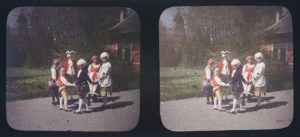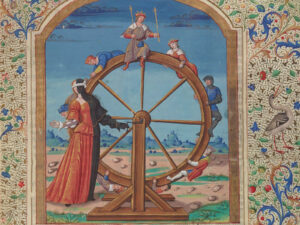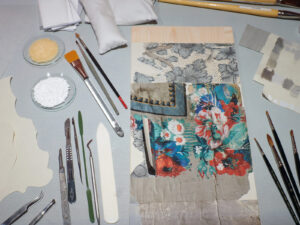
The vibrancy of Sechseläuten 100 years ago
Five early colour photos from 1914 show just how colourful the Zurich spring festival was even 100 years ago.
During Sechseläuten on 16 April 2018, members of the various guilds will once again parade through the centre of Zurich in flamboyant costumes. This procession by the guilds along Bahnhofstrasse via Limmatquai is followed in Sechseläutenplatz square at 6pm on the dot by the burning of the Böögg, an artificial snowman stuffed with wood wool, cardboard, jute, cotton wool and firecrackers. The head of the Böögg is filled with particularly loud bangers. According to tradition, the length of time between setting fire to the Böögg and the explosion of its head determines what the weather will be like in summer: the sooner it explodes, the more promising summer should be. The name of the festival, which translates into English as the “six o’clock ringing of the bells”, goes back to a council decision from the 16th century to ring in the end of the working day during the summer months at six o’clock rather than five. Like many other public festivals, Sechseläuten has also changed over the centuries. The celebration as we know it today, with the procession and the burning of the Böögg, is barely 100 years old. From this period we also have five early colour photographs of Sechseläuten in the collection belonging to the Swiss National Museum.
Who or What is the Böögg? Video: Zurich Tourism
In 1907, the Lumière brothers marketed the first commercially successful method of colour photography, the autochrome, which uses dyed potato starch and silver salts. This made it possible to produce a colour photograph directly for the very first time. Autochromes have a painting quality to them due to the colouring of the coarse potato starch. However, this early colour photography was not very practical. Since the autochrome is unique and consists of a glass plate, it requires a technical tool for viewing, such as a projector, making it difficult to reproduce and exhibit.
District engineer Wilhelm Keller (1862–1942) was a passionate amateur photographer. During Sechseläuten on 20 April 1914, he took an autochrome photo of a group of men posing in classical military garb.
In the same year, engineer Heinrich Sallenbach (1890–1920) took autochrome pictures of the same occasion. Four photographs depict girls and boys in traditional and fancy costumes on the day of the children’s procession, which has been taking place on the Sunday before Sechseläuten since the 1890s. The various costumes point to membership of different guilds and range from traditional Swiss costumes to Rococo fancy wear.




Hans Sallenbach, Group of children, Sechseläuten, Zurich, 19/04/1914, stereo colour slide: gelatin dry plate, autochrome, 7 x 15 cm, Swiss National Museum
The autochrome process demanded a lot of light and therefore long exposure times. As the three black-and-white photographs show, the motion scenes of the procession could only be captured using the monochrome technique.
Sallenbach’s double images are stereoscopic pictures, which were very popular from the 1850s onwards. Thanks to a viewing device known as a stereoscope, the eye could merge the two photos taken from slightly different positions to create a 3D image. This allowed people to immerse themselves in familiar or unfamiliar worlds from home or at a fair.
For today’s observers, the autochromes by Keller and Sallenbach mainly allow a colourful glimpse into a bygone time.

Wooden stereoscopic picture viewer from around 1920-1935. Photo: Swiss National Museum



Anonymous, Sechseläuten procession, corner of Bahnhofstrasse and Börsenstrasse (left), Rämistrasse (middle), Zurich on 20/04/1914. Photos: Swiss National Museum
Glass plate collection goes online
The National Museum possesses over 40,000 photographic glass plates, including more than 800 autochromes, which found their way into the collection through various purchases and donations. The majority came from the famous Ruth and Peter Herzog collection (Basel). Since 2017, the photographs have been expertly processed and made accessible to the public digitally. If rights of use permit, the pictures are published in the SNM’s online collection.



